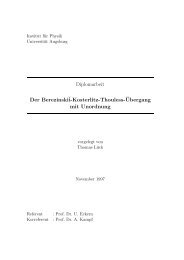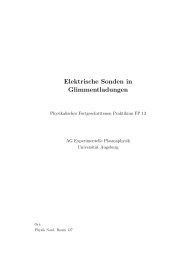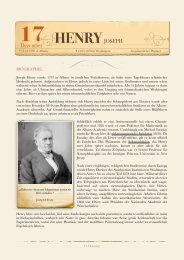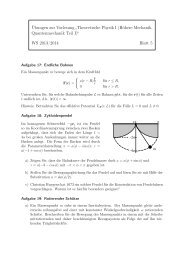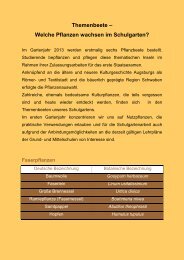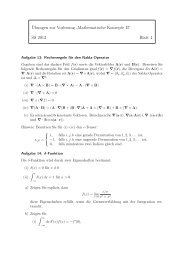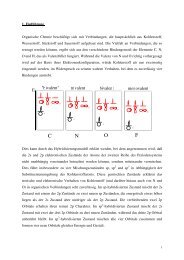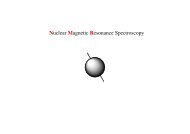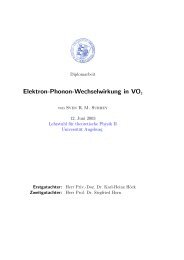Numerical Renormalization Group Calculations for Impurity ...
Numerical Renormalization Group Calculations for Impurity ...
Numerical Renormalization Group Calculations for Impurity ...
You also want an ePaper? Increase the reach of your titles
YUMPU automatically turns print PDFs into web optimized ePapers that Google loves.
31<br />
4. SOFT-GAP ANDERSON MODEL<br />
4.1 Introduction<br />
The Hamiltonian of the soft-gap Anderson model is given by<br />
∑<br />
H = ε f f σ † f σ + Uf † ↑ f ↑f † ↓ f ↓ + ∑ ε k c † kσ c kσ + V ∑ (f σ † c kσ + c † kσ f σ). (4.1)<br />
σ<br />
kσ<br />
kσ<br />
This model describes the coupling of electronic degrees of freedom at an impurity<br />
site (operators f (†)<br />
†<br />
to a fermionic bath (operators c (†)<br />
kσ<br />
) via a hybridization V .<br />
The f-electrons are subject to a local Coulomb repulsion U, while the fermionic<br />
bath consists of a non-interacting conduction band with dispersion ε k . The model<br />
Eq. (4.1) has the same <strong>for</strong>m as the single impurity Anderson model (Hewson 1993)<br />
but <strong>for</strong> the soft-gap model we require that the hybridization function<br />
˜∆(ω) = πV 2 ∑ k<br />
δ(ω − ε k ) (4.2)<br />
has a soft-gap at the Fermi level,<br />
˜∆(ω) = ∆|ω| r , (4.3)<br />
with an exponent r > 0. This translates into a local conduction band density of<br />
states ρ(ω) = ρ 0 |ω| r at low energies. The power-law density of states was first<br />
introduced <strong>for</strong> the Kondo model (Withoff and Fradkin 1990). In contrast to the<br />
usual Kondo model, where conduction-electrons with a non-zero density of states<br />
at the Fermi energy <strong>for</strong>m a Kondo-screening state <strong>for</strong> T → 0, a gap vanishing<br />
at the Fermi energy brings about a non-trivial zero temperature critical point at<br />
a finite coupling constant J c and the Kondo effect occurs only <strong>for</strong> J > J c . The<br />
existence of the critical point was derived using a generalization of the “poorman’s-scaling”<br />
method <strong>for</strong> the density of states given in Eq. (4.3).<br />
J R = (D ′ /D) r J ′ ≈ J + J(JCD r − r)δE/D (4.4)<br />
In addition to the fixed points at J = 0 and ∞, there is a new infrared unstable<br />
fixed point at<br />
J c = r/CD r (4.5)



